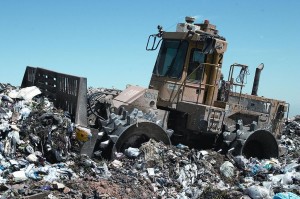THURSDAY, 21 JUNE 2012
Polyurethane can be found in a wide range of products, from baby pacifiers to wall insulation, and because of its high resistance to decomposition threatens to persist long into the future. This may all start to change with the discovery of Pestalotiopsis microspora in Ecuador’s Yasuni National Park.Although threatened by oil extraction and deforestation, this park is often touted as the most biologically diverse area on the planet, making it ideal for bioprospecting — the search for beneficial biological resources.
While on a field course, students isolated dozens of fungi living inside various randomly selected woody plants. The fungi were grown on solid polyurethane as part of a screen for their ability to degrade the plastic. As the fungi degraded the solid medium, the white colour of the plastic became translucent from the top to a depth indicative of its degradation. Over a two-week period the five most efficient degraders were able to subsist solely on polyurethane; degrading the solid medium by 1.5 to 3.0 centimetres.
Encouragingly, P. microspora, the most efficient degrader of polyurethane, could do so even in the absence of oxygen, a finding that brings promise to the degradation of plastics in oxygen-deplete landfills. An activity-based probe was used to identify a protein in the serine hydrolase family as the compound able to digest the plastic – a property that was retained when the protein was purified. With polyurethane a major part of the global waste problem, this study offers a new, promising solution.
DOI: 10.1128/AEM.00521-11
Written by Daniel Matthew L Storisteanu

